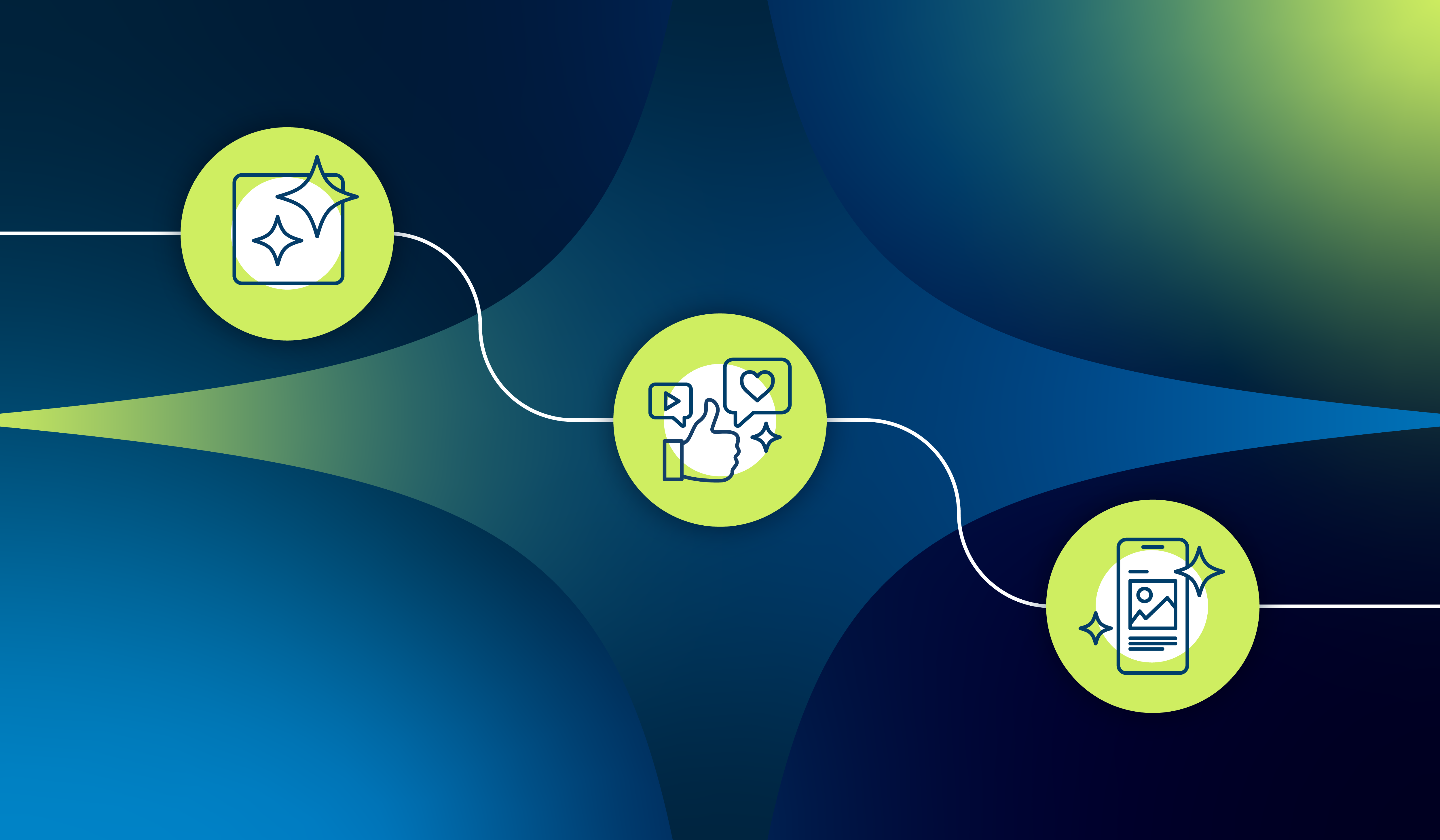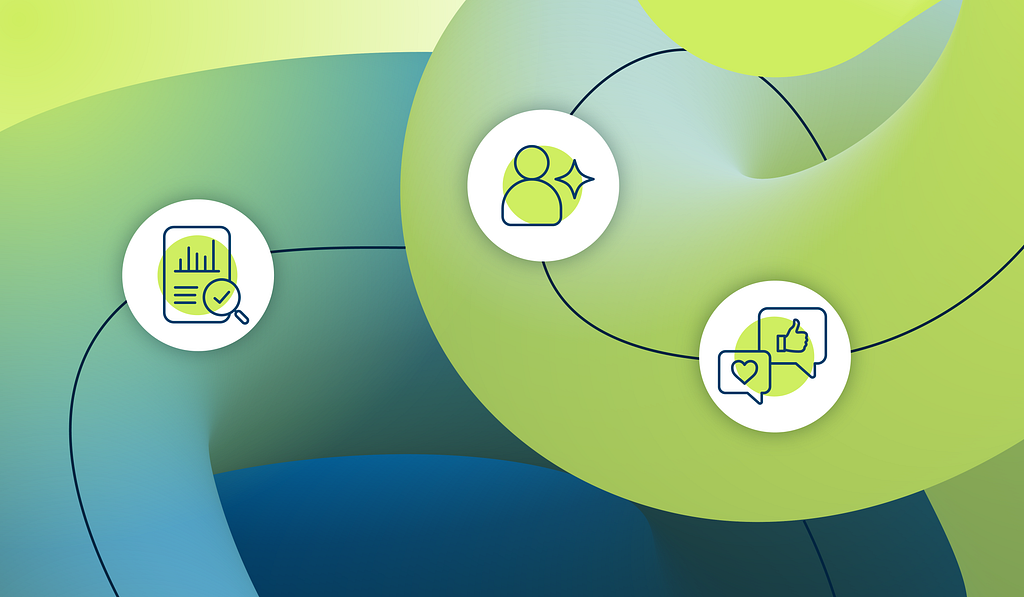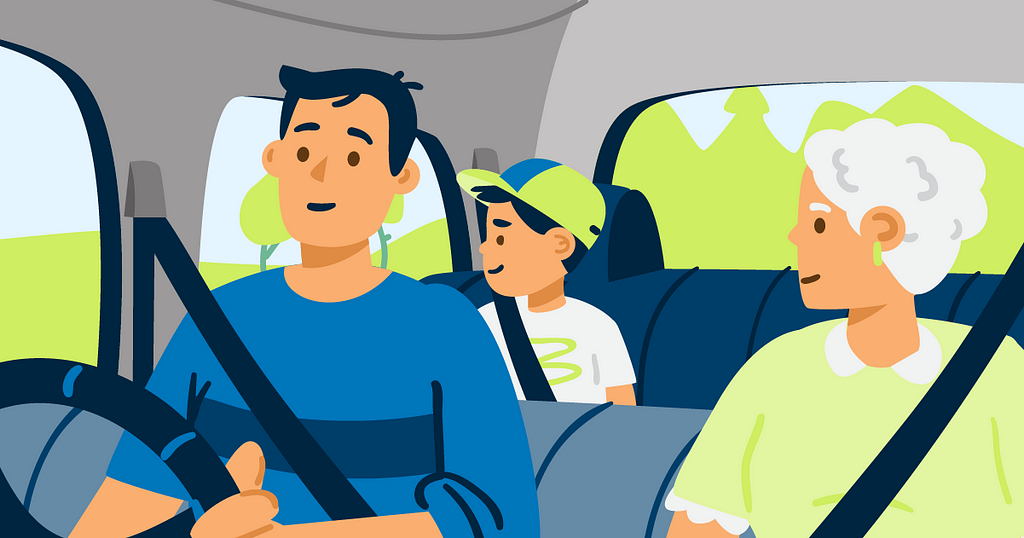
The Future of Design: Creating Connection and Engagement
This article was developed with insights from Allison Weinstock, Director of Creative, and written by Megan Wojcik, Senior Writer.
Look at a piece of design, and you’re seeing more than visuals — you’re feeling the intent behind it. Even if you don’t realize it, your brain is picking up on subtle cues that shape how you think and feel, and what you do next.
Think about it: The color palette sets a mood before a single word is read. The font signals whether something feels approachable, serious, or playful. The layout directs the eye, guiding someone to the most critical point or the call to action. The imagery can spark feelings of trust, belonging, or aspiration.
None of this happens by accident. The most effective design goes beyond surface-level aesthetics. It works on both conscious and subconscious levels, delivering a message that feels natural yet stays in your mind, prompting you to take action. The real power of intentional design goes beyond aesthetics. Its influence.

As we head into the final quarter of the year and prepare for 2026, our experts have been analyzing trends to ensure clients can seize every opportunity. In this four-part series, we share our top solutions for developing creative, strategic ways to tell stories, build brands, and reach audiences in meaningful and measurable ways.
Here, we focus on design, showing how the most effective organizations aren’t just reacting — they’re anticipating what’s next, so they deliver work that leads the conversation rather than follows it.
AI as a support tool
AI is more than a buzzword. It’s transforming workflows. From broadening brainstorms and ensuring no idea is overlooked, to quickly removing unwanted elements from an image or expanding backgrounds for new aspect ratios, AI accelerates production without replacing human creativity. In video editing, AI enhances efficiency across the board, including the production of a strong first draft of closed caption transcriptions — a significant time-saver. In many ways, it’s helping designers, editors, and writers work smarter, faster, and more effectively.

Design that sparks engagement
In supporting agencies’ social media, we’re seeing increased interest in blending traditional, credible voices with more contemporary approaches to engagement. That includes lighter, shareable formats — sometimes even meme-inspired creative, depending on the subject — that allow agencies to join conversations already happening online. The challenge, and the opportunity, is striking the right balance: keeping accounts credible and trusted while making their content discoverable, relatable, and engaging.

Meeting audiences where they are
It’s a digital world — according to statcounter GlobalStats, mobile devices make up about 59% of all web traffic — and agencies are increasingly shaping their creative to match. Creative used to start with print and long-form assets, but now many campaigns are designed with social and mobile in mind first. That means updating aspect ratios to vertical layouts, adjusting copy to succinct bits of information, using larger on-screen text, and incorporating clear calls to action. It also involves staying current with the sizes and capabilities of social platforms and other online spaces where agencies want to be present.

Key takeaway: Translate trends into strategies that build credibility, relevance, and impact
By blending design expertise, audience insights, and smart tools like AI, agencies can create content that not only looks good but also drives meaningful engagement. Whatever the future holds, smart, strategic design helps clients turn every touchpoint into an opportunity to tell their story, build trust, and inspire action.

Missed part one? Read our first blog in the Trends Series: The Future of Digital Engagement.



